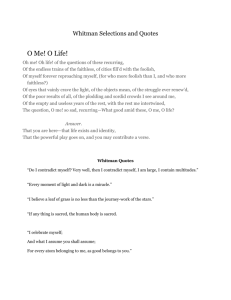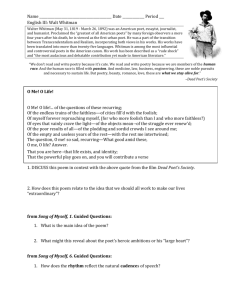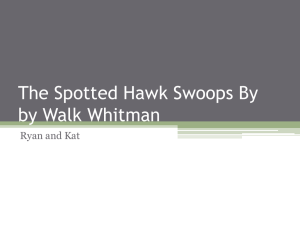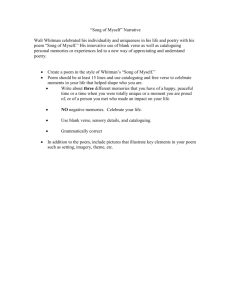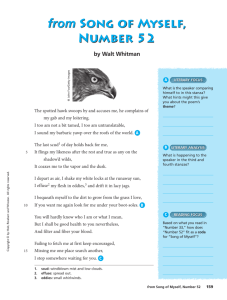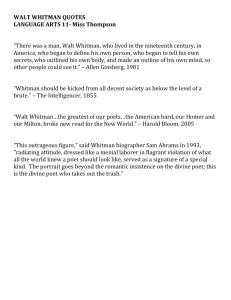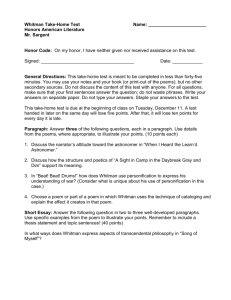“Song of Myself”
advertisement
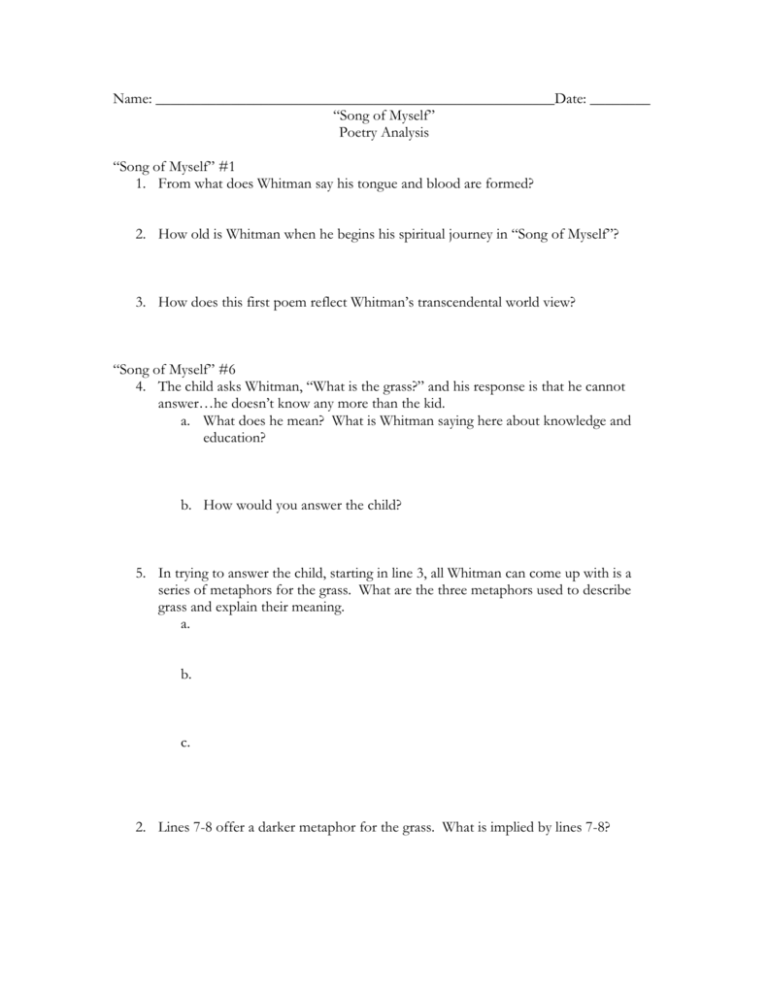
Name: _____________________________________________________Date: ________ “Song of Myself” Poetry Analysis “Song of Myself” #1 1. From what does Whitman say his tongue and blood are formed? 2. How old is Whitman when he begins his spiritual journey in “Song of Myself”? 3. How does this first poem reflect Whitman’s transcendental world view? “Song of Myself” #6 4. The child asks Whitman, “What is the grass?” and his response is that he cannot answer…he doesn’t know any more than the kid. a. What does he mean? What is Whitman saying here about knowledge and education? b. How would you answer the child? 5. In trying to answer the child, starting in line 3, all Whitman can come up with is a series of metaphors for the grass. What are the three metaphors used to describe grass and explain their meaning. a. b. c. 2. Lines 7-8 offer a darker metaphor for the grass. What is implied by lines 7-8? 3. How does the last stanza, beginning at line 9, reflect Transcendental influence on Whitman’s poetry? 4. What do you make of the last two lines of the poem? a. How do the lines encapsulate Whitman’s views on death? 5. Whitman uses many literary devices in his poems to compensate for the lack of rhyme scheme and meter. Identify examples of the following literary devices. a. Alliteration: b. Metaphor: c. Imagery: “Song of Myself” #9 1. What time of year and activity is described in #9? 2. What is Whitman’s role in this activity? How do you know? How does “Song of Myself” #14 1. What part of life does the speaker seem to be celebrating in this poem? Cite a line to support your opinion. “Song of Myself” #17 1. What natural images does Whitman use to communicate the idea that his thoughts belong to everyone? “Song of Myself” #52 1. Characterize the speaker. a. How has he changed from “Song of Myself” #1? b. Consider the first line of SOM#1, “I celebrate myself and sing myself” and the last line of SOM #52, “I stop somewhere waiting for you.” What do these last words reveal about Whitman’s purpose for writing SOM? 2. After reading these selections from SOM, summarize the themes discussed in SOM #52, which is the ending to SOM. 3. Again, Whitman uses several different literary devices in SOM #52. Find examples of the following: a. Visual Imagery: b. Auditory Imagery: c. Tactile Imagery: d. Parallel structure: e. Alliteration:
